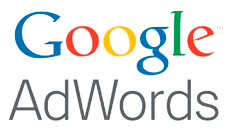Google AdWords, Oct 20, 2015
 Thoughts about AdWords – how does it work?
Thoughts about AdWords – how does it work?
PPC = Pay Per Click. Everytime someone clicks on your ad, you pay a fee according to several variables.
But what do you pay, how do you decide how much you’re willing to pay, and how likely is it someone will actually follow through and purchase the product your selling?
It’s also an Auction-bases system. WHO gets the top spot on a SERP page? The advertiser who offers the highest bid for that location. But that’s only part of the story, Google also wants the top spot to be the most useful and relevant, so it factors in the advertiser’s Landing page to see if that’s the most useful for the viewer. Are they really going to find what they searched for? The “Quality Score” together with the bid will affect the positioning.
However, there is also a Second-Price auction. This is where you only pay the minimum to beat out your competitor. Google makes the adjustment.
Usinsg AdWords gives you access to the Google Network. This includes 2 big areas: The Google Search Network, and the Google Display Network. The Search networks is the basic search in Google and the list of matches according to the seach term. The Display Network includes graphic ads shown on other websites such as Google Maps, Google Shopping, Google partner sites such as AOL, and private sites that allow Google to display ads on their pages.
Text based ads are shown on the Search Network. The SERP page shows both paid ads next to the organic search results. The paid ads have a small yellow “Ad” icon next to them. If clicked, the advertiser pays a fee.
Text ads reach customers using keywords to actively look for a specific product.
Display ads reach a broader audience by appearing on related websites to show viewers something they ‘may’ be interested in, and build brand awareness. (A kitchen renovation website may show ads for local plumbers – the viewer realizes they’ll need a plumber but they were not searching for that term!)
Target your ads
- Keywords
- Interest
- Demographics
- Location
- Devices
No minimal advertising spending. Pay-Per-Click
Integrated with Google Analytics, help to see what works and what does not.
To sign up, need credit card info.
Then set up a campaign(s). Set up campaigns like the categories in your store. Then ad groups are divisions of the campaigns. Each ad group may have 2-3 ads, with 10-30 keywords specific to that product.
For text ads:
Headline
Description line..
Description line..
URL address
If you pay $1 per click, and 10 people click ($10 fee) and you make a sale of $20, you’ve made a profit. If 100 people click ($100 fee) and you sell 1 product at $20, you lose $80! To break even you need to make 5 sales based on those 100 click-throughs.
======================
https://www.google.com/adwords/
Start Now
Skip the guided setup.
Sign up with the same creds as for Analytics, and then login. (Might have to verify with phone call.)
Will get an email for verification of the email address.
The Campaigns home page opens up.
===========
Creating ads:
3 types of Phrase Match:
- Broad Match: Keywords present anywhere in the search (more views, but less qualified viewers)
- Phrase Match: Keywords in order in the search (Less views but better qualified viewers)
- Exact match: Keywords in order and only words in search
Start with exact match, and depending on results increase to broad match.
Group ads together.
Negative keywords: tell Google to not show your ad for a variant of the product you don’t sell. Use Analytics to see Query Match Type and see which are not converting well.
Bid on your own brandname.
Know the competition! What keywords do they use, the design of their landing pages.
youtube.com/watch?v=zStNy_PImyQ
support.google.com/adwords/
youtube.com/watch?v=I3CFBweWnzc
www.digitalmarketer.com/get-more-clicks-from-google-adwords/
